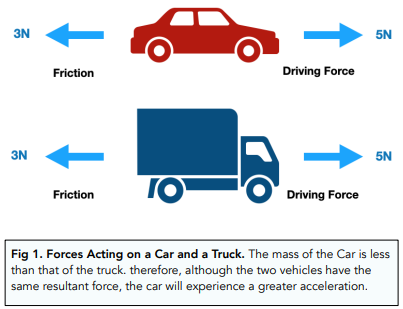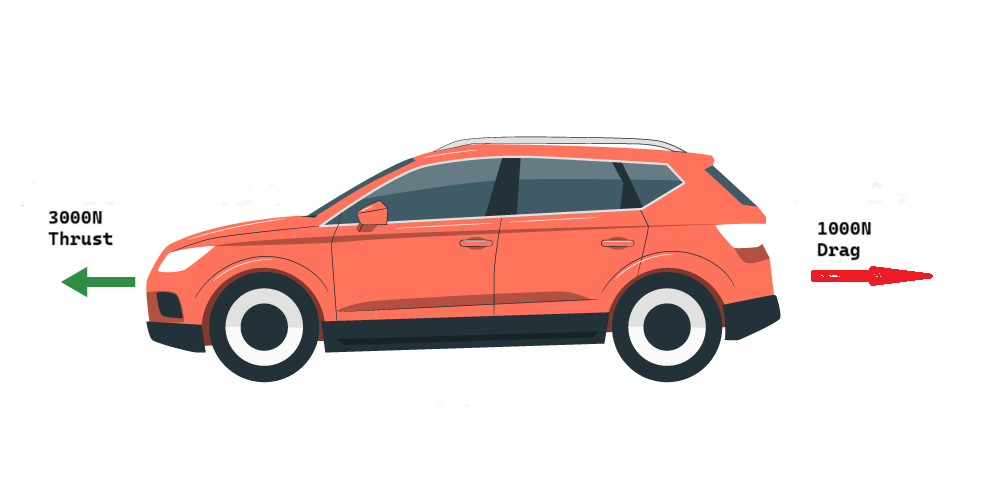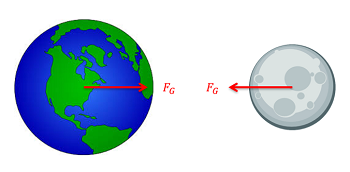Newton's First Law
- Newton's First Law of Motion states that an object will remain at rest or in a state of uniform motion (constant speed in a straight line) unless acted upon by an external force.
- This is known as inertia - the tendency of an object to maintain its state of motion. If nothing is done to an object, it will either stay still or move at a constant speed. It won't randomly accelerate or decelerate.
- The higher the mass, the higher the inertia. In other words, the heavier an object is, the harder it will be to change its motion.
- This is why it is easier to push a sponge than to push a brick. The sponge has a smaller mass and therefore has a smaller inertia, making it easier to change its state of motion from stationary to moving.



